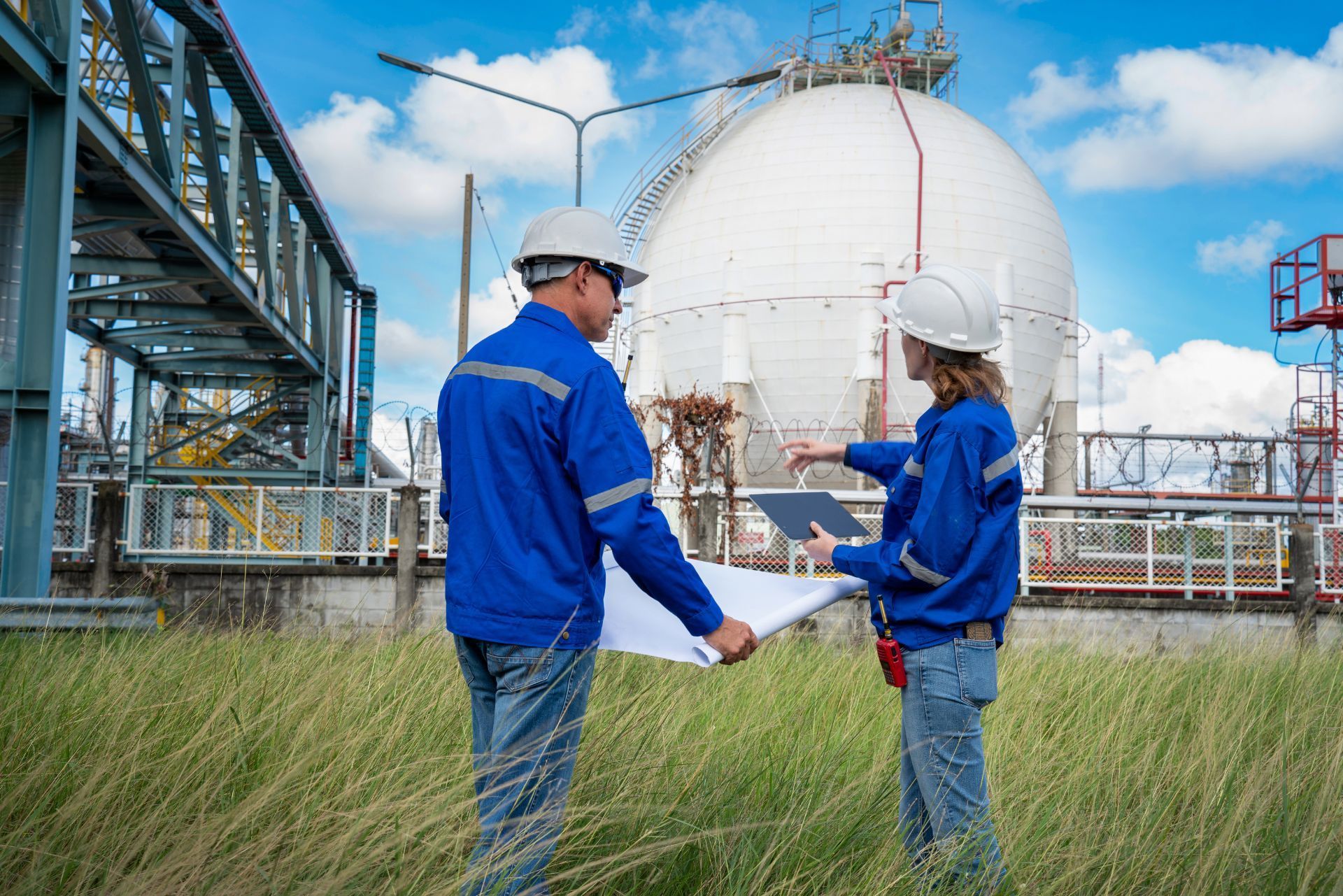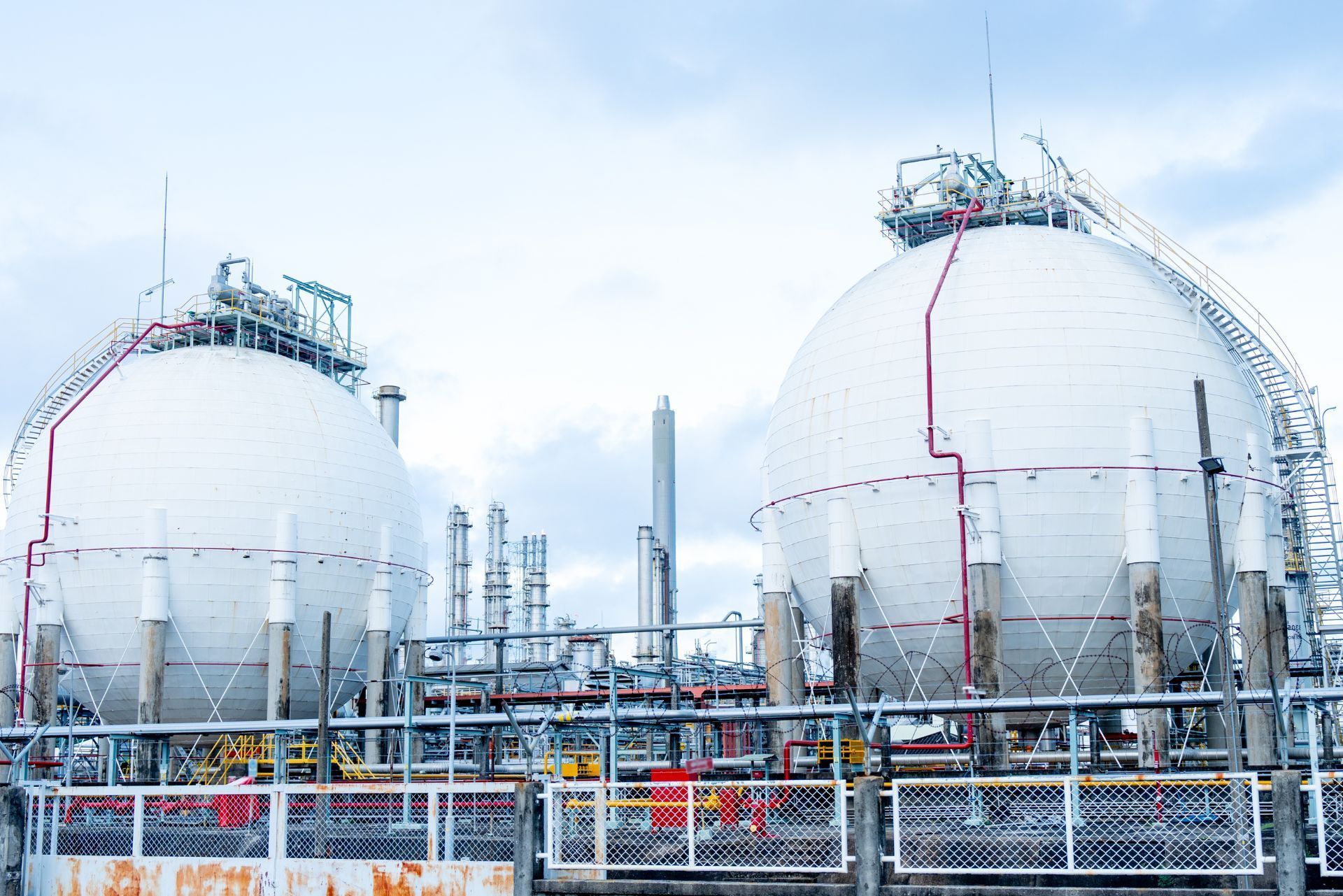Top 3 Recommended Policies

In the dynamic world of construction, managing risks is paramount. Spherical Gas Construction Insurance has emerged as a vital safeguard for contractors, developers, and project owners navigating the complexities of modern construction projects. With the global contractor insurance market poised to expand significantly over the next decade, understanding the nuances of this insurance type is essential for anyone involved in the construction industry.
Projected to grow from USD 39.89 billion in 2023 to an impressive USD 105.60 billion by 2033, the contractor insurance market is evolving rapidly, driven by larger projects, increasing material costs, and the integration of cutting-edge technologies. This article delves into everything you need to know about Spherical Gas Construction Insurance, its market trends, challenges, and the transformative role of technology in shaping its future. For a comprehensive look at market growth, see the detailed analysis on sphericalinsights.com.
Understanding Spherical Gas Construction Insurance
Spherical Gas Construction Insurance is a specialized form of coverage designed to protect construction projects that involve the use or containment of spherical gas storage tanks or related infrastructure. These projects often come with unique risks due to the volatile nature of the gases involved and the complexity of the structures. The design of spherical tanks, for instance, is not only a matter of efficiency but also safety, as their shape helps to evenly distribute pressure and minimize the risk of structural failure.
Unlike standard construction insurance, this policy covers specific perils such as gas leaks, explosions, and environmental contamination, which can lead to costly damages and liability claims. Given the high stakes, insurers tailor these policies to address the particular hazards associated with spherical gas construction, ensuring comprehensive protection for contractors and stakeholders. Furthermore, the insurance often includes coverage for regulatory compliance, which is crucial in an industry where adherence to safety standards and environmental regulations is paramount. This aspect of the coverage can help mitigate the financial impact of potential fines or remediation efforts resulting from non-compliance.
As construction projects grow in scale and complexity, the value and importance of such specialized insurance increase. Raymond Hogendoorn, Global Head of Property and Engineering Claims at Allianz Global Corporate & Specialty (AGCS), highlights this trend: "Construction sites today are much larger than in the past. Whether it is a power plant, refinery or car manufacturing plant, projects are now typically much larger and higher value." The increasing sophistication of technology used in these projects also necessitates a more nuanced approach to risk management. Advanced monitoring systems and automation can help detect issues before they escalate, yet they also introduce new vulnerabilities that need to be considered in the insurance framework.
Moreover, the global push for cleaner energy sources and the transition to sustainable practices have led to a rise in the construction of facilities that utilize spherical gas storage. This shift not only emphasizes the need for robust insurance solutions but also encourages innovation in safety measures and construction techniques. As companies strive to meet both regulatory requirements and public expectations for environmental stewardship, the role of specialized insurance becomes even more critical in safeguarding investments and ensuring project viability in an evolving landscape.

Market Trends Impacting Spherical Gas Construction Insurance
The contractor insurance market is currently experiencing significant shifts. One of the most notable trends is the steady increase in premiums, driven largely by rising material and labor costs. For example, builder’s risk insurance premiums surged by 18% in 2025, reflecting inflationary pressures and supply chain challenges that have impacted the entire construction sector.source
At the same time, the global construction insurance market is showing signs of softening in certain segments due to heightened competition among insurers. This competitive environment has led to premium reductions in some areas, providing some relief to contractors but also intensifying pressure on insurers to innovate and differentiate their offerings.source
These market dynamics are particularly relevant for spherical gas construction projects, which often involve high-value assets and complex risk profiles. Insurers must balance the need to offer competitive pricing with the imperative to maintain robust coverage for potentially catastrophic events. The unique characteristics of spherical gas facilities, including their operational complexities and the volatile nature of the materials involved, create a landscape where risk management becomes paramount. As such, insurers are increasingly focusing on tailored policies that address the specific risks associated with these projects, ensuring that contractors are adequately protected against unforeseen incidents.
Key Risks Driving Claims in Construction Insurance
Understanding the primary causes of claims is crucial for managing risk effectively. Analysis of over 22,000 insurance claims between 2017 and 2021 reveals that the top causes of claims by value in construction and engineering insurance include fire and explosion, flood, earthquake, and storm-related damages.source Given the nature of spherical gas facilities, fire and explosion risks are particularly salient, necessitating stringent safety protocols and comprehensive insurance coverage. In addition to these risks, the construction of spherical gas facilities often involves intricate engineering processes and the handling of hazardous materials, which can lead to additional liabilities. Contractors must invest in advanced training for their workforce, ensuring that all safety measures are adhered to, while also implementing cutting-edge technology to monitor and mitigate risks associated with gas storage and transportation.
Furthermore, the regulatory landscape surrounding gas construction projects is becoming increasingly stringent, with governments imposing more rigorous safety standards and environmental regulations. This evolving framework not only affects the operational aspects of construction projects but also influences the insurance landscape, as insurers must adapt their policies to comply with new legal requirements. As a result, contractors are encouraged to work closely with their insurance providers to ensure that their coverage aligns with current regulations and adequately addresses the unique challenges posed by the construction of spherical gas facilities. This proactive approach can help mitigate potential claims and enhance overall project viability.
The Role of Technology and AI in Construction Insurance
Technology is revolutionizing the construction insurance landscape, with artificial intelligence (AI) playing a pivotal role in enhancing risk assessment and claims processing. AI-driven tools enable insurers to analyze vast amounts of data more efficiently, improving the accuracy of underwriting and speeding up claim settlements.
One promising application is the AI-augmented interpretation of building blueprints, which allows for automated extraction of critical information to support risk evaluation. This approach not only reduces human error but also accelerates decision-making processes, benefiting both insurers and insured parties.source
Moreover, integrating advanced technologies helps insurers better manage the complex risks associated with spherical gas construction projects, such as monitoring structural integrity and detecting potential hazards early. These innovations contribute to more resilient construction practices and improved customer experiences.source
In addition to risk assessment, AI is enhancing the claims processing workflow through machine learning algorithms that can predict claim outcomes based on historical data. By analyzing patterns from previous claims, insurers can identify potential fraudulent activities more effectively, thereby safeguarding their resources and ensuring that legitimate claims are processed swiftly. This predictive capability not only streamlines operations but also fosters trust between insurers and policyholders, as clients experience faster resolutions to their claims.
Furthermore, the use of drones and IoT devices in construction sites is transforming how insurers gather data for risk management. Drones equipped with high-resolution cameras can conduct aerial surveys, capturing real-time images of construction progress and site conditions. This data can then be analyzed using AI to assess compliance with safety regulations and identify any deviations from approved plans. By leveraging these technologies, insurers can proactively address issues before they escalate, ultimately leading to safer construction environments and reduced insurance costs.
Addressing Natural Disaster Risks in Construction
Natural disasters pose a significant threat to construction projects worldwide, with global economic losses from such events reaching $380 billion in 2024 alone.source For spherical gas construction, where infrastructure is often critical to energy supply and industrial operations, resilience against natural disasters is paramount.
Insurance policies must therefore incorporate coverage for risks such as floods, earthquakes, and storms, which are among the leading causes of costly claims. This coverage not only protects financial interests but also supports the continuity of essential services and infrastructure in the aftermath of disasters.
Contractors and project owners should prioritize risk mitigation strategies, including robust design standards, site selection considerations, and emergency response planning, to complement their insurance coverage and reduce vulnerability to natural hazards.
In addition to traditional construction practices, the integration of advanced technologies such as Building Information Modeling (BIM) and Geographic Information Systems (GIS) can significantly enhance disaster preparedness. BIM allows for the simulation of various disaster scenarios, enabling teams to visualize potential impacts and devise effective countermeasures. GIS, on the other hand, provides critical data on geographical vulnerabilities, helping stakeholders make informed decisions about site selection and design adaptations that can withstand specific environmental threats.
Furthermore, fostering a culture of safety and preparedness within the workforce is essential. Regular training and drills can ensure that all personnel are equipped with the knowledge and skills to respond effectively during a disaster. Engaging with local communities and emergency services can also create a collaborative approach to disaster readiness, ensuring that construction projects not only meet regulatory standards but also contribute to the overall resilience of the region in the face of natural calamities.

Why Spherical Gas Construction Insurance Matters
As construction projects involving spherical gas tanks and related infrastructure grow in scale and complexity, the need for specialized insurance coverage becomes increasingly critical. These projects carry unique risks that standard insurance policies may not adequately address, making tailored solutions essential for comprehensive protection.
By securing Spherical Gas Construction Insurance, stakeholders can safeguard against potentially devastating financial losses stemming from accidents, natural disasters, and operational failures. This insurance not only provides peace of mind but also facilitates smoother project financing and regulatory compliance.
With the contractor insurance market on a robust growth trajectory and technological advancements enhancing risk management capabilities, now is an opportune time for construction professionals to evaluate their insurance needs and ensure they are adequately covered for the challenges ahead.
Moreover, the intricacies of spherical gas tank construction demand a thorough understanding of the specific hazards involved, such as gas leaks, structural failures, and environmental impacts. Each project often requires a detailed risk assessment to identify potential vulnerabilities, which can vary significantly based on geographical location, design specifications, and operational practices. By collaborating with insurance providers who specialize in this niche, contractors can gain insights into best practices and risk mitigation strategies that go beyond mere compliance, fostering a culture of safety and accountability on-site.
Additionally, the integration of advanced technologies such as drones for site inspections and IoT devices for real-time monitoring is revolutionizing how risks are managed in the construction industry. These innovations not only enhance safety protocols but also provide valuable data that can be leveraged to tailor insurance policies more effectively. As the industry continues to evolve, embracing these technological advancements will be crucial for stakeholders aiming to minimize risks and maximize their insurance investments, ensuring that they are prepared for any eventuality that may arise during the lifecycle of their projects.
Conclusion
Spherical Gas Construction Insurance represents a vital component of risk management in today’s complex construction environment. From addressing the unique hazards of spherical gas infrastructure to adapting to evolving market conditions and leveraging AI-driven innovations, this specialized insurance plays a crucial role in protecting high-value projects.
As the global contractor insurance market continues its rapid expansion, staying informed about market trends, emerging risks, and technological advancements is essential for contractors, insurers, and project owners alike. By embracing comprehensive coverage and proactive risk management strategies, the construction industry can build a safer, more resilient future.
For those involved in spherical gas construction projects, understanding the intricacies of this insurance type and its broader market context is not just beneficial—it’s indispensable.
Contact Us
Phone
Location
9595 Six Pines Dr, Suite 8210, The Woodlands, TX 77380

